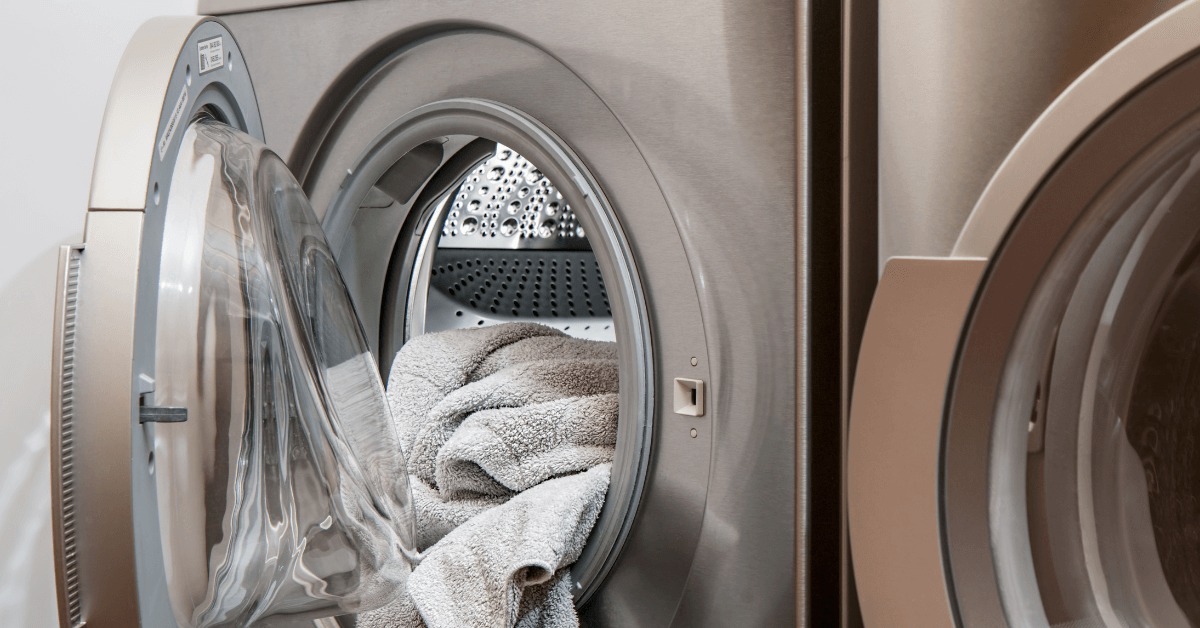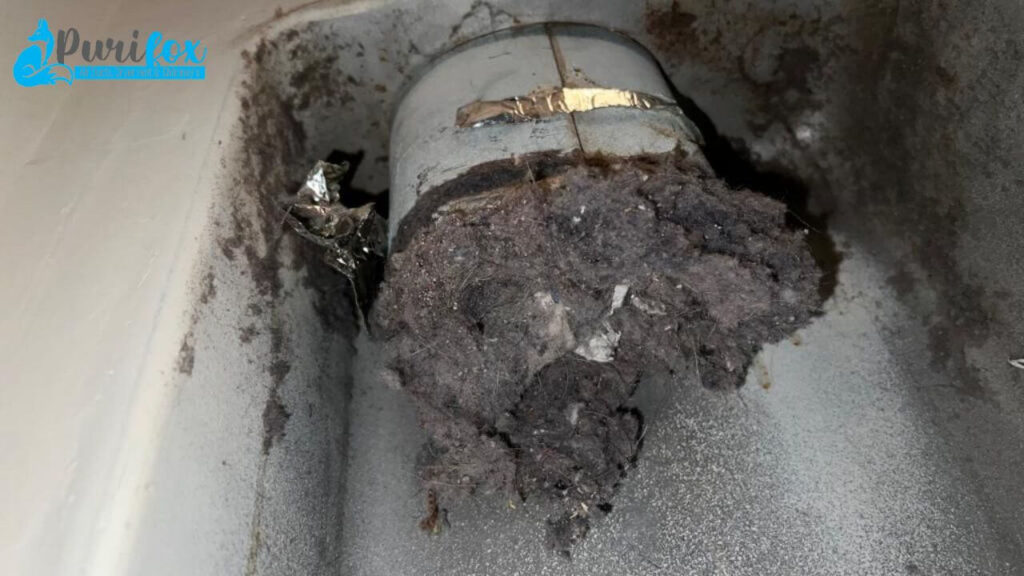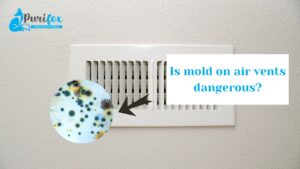Is your dryer take too much time to dry clothes than usual? Is there a musty odor while the dryer is on? Is there an increase in your energy bills?
Your dryer feel very hot to the touch while running? Then regrettably, the dryer vent is clogged and you need to have it cleaned ASAP.
Dryer vents are an important part of your dryer system, but they’re often overlooked. A clogged dryer vent can cause a number of problems, including longer drying times, higher energy bills, and even a fire hazard. According to the National Fire Protection Association, dryer vents are the leading cause of clothes dryer fires in the United States.
That’s why it’s important to know how to tell if dryer vent is clogged and to have it cleaned regularly.
In this blog post, we’ll discuss how to tell if dryer vent is clogged and what to do if it is. We’ll also provide some tips on how to keep your dryer vent clean and prevent clogs from happening in the first place.
How To Tell If Dryer Vent Is Clogged?
Long Drying Times
One of the most common signs of a clogged dryer vent is long drying times. When your vent is clogged, it obstructs the flow of hot, moist air from the dryer to the outside. This means your dryer has to work much harder to dry your clothes, which can take up to twice as long as usual.

Imagine your dryer as a giant lung. When you breathe in, you take in oxygen and exhale carbon dioxide. Your dryer does the same thing, but with hot, moist air. The dryer vent is the tube that allows the moist air to escape.
If the dryer vent is clogged, the moist air can’t escape. This is like trying to breathe out through a clogged straw. It’s difficult and requires a lot of effort.
In the same way, your dryer has to work much harder to dry your clothes when the vent is clogged. This can lead to long drying times, damp clothes, and increased energy bills.
Clothes Feel Hotter Than Usual
If you touch your clothes as they come out of the dryer, and they feel exceptionally hot to the touch, it’s a warning sign that your dryer vent may be clogged. The clogged vent prevents proper ventilation, causing excess heat to build up inside the dryer.
When the dryer vent is clogged, the hot air from the dryer cannot escape properly. This causes the temperature inside the dryer to rise, which in turn heats up your clothes more than they normally would be.
A Musty Smell
When your dryer vent is clogged, it can trap moisture inside the dryer drum. Over time, this trapped moisture can result in a musty or moldy odor that transfers to your clothes. This is because moisture is a breeding ground for mold and mildew, and the warm, dark environment inside a dryer drum is perfect for their growth.

If you notice a musty smell on your freshly dried laundry, it’s a good indication that your dryer vent is clogged. This is especially true if the smell is new or has been getting worse over time. Other signs of a clogged dryer vent include:
Excess Lint Around the Dryer
Lint is a natural byproduct of drying clothes, but too much lint can be a sign of a serious problem. If you find an unusual amount of lint collecting around your dryer or in the surrounding area, it could mean that your dryer vent is clogged. This is a fire hazard that should not be ignored.
When lint builds up in your dryer vent, it can block the airflow and cause your dryer to overheat. This can lead to a fire, which can quickly spread to your home.
Hot Dryer Exterior
When your dryer is running, it generates a lot of heat. This heat is normally exhausted through the dryer vent, but if the vent is clogged, the heat can become trapped inside the dryer. This can cause the dryer to overheat, which can damage the components and even start a fire.
One way to tell if your dryer vent is clogged is to feel the exterior of the dryer while it’s running. If the dryer is excessively hot to the touch, it’s a sign that the vent is clogged and the heat is building up inside.
If you suspect that your dryer vent is clogged, it’s important to have it cleaned by a professional. A clogged dryer vent is a fire hazard, so it’s important to take this issue seriously.
Flapper on Vent Hood Doesn’t Open
The exterior vent hood of your home should have a flapper that opens when the dryer is in use. This allows hot, moist air to escape. If you observe that this flapper doesn’t open or only partially opens, it’s likely due to a blockage in the vent. This situation prevents the proper release of air, leading to poor dryer performance.
Burning Smell
If you detect a burning smell while your dryer is operating, it’s a severe warning sign that your dryer vent is clogged. Lint and debris can build up in the vent over time, restricting airflow and causing the dryer to overheat. Overheating lint is extremely flammable, and can quickly lead to a fire.
If you smell burning, the first thing you should do is immediately stop using the dryer and disconnect it from the power source. Once the dryer is safely turned off, you can begin to troubleshoot the problem.
Why Do You Need to Clean Your Dryer Vent?
Reduce Fire Hazard:
Regular dryer vent cleaning helps reduce fire hazards by clearing the dryer vent of accumulated lint and dust.
Dryer lint is highly flammable, and a clogged dryer vent is a major fire hazard. According to the U.S. Fire Administration, clothes dryers cause an average of 15,500 fires each year, resulting in $238 million in property damage. Over 80% of these fires are caused by lint buildup in the dryer vent.
Regular dryer vent cleaning can help prevent this by removing the lint and dust from the vent and allowing the dryer to operate properly. The National Fire Protection Association (NFPA) recommends that dryer vents be cleaned professionally at least once a year. However, if you use your dryer frequently, you may need to clean it more often.
Improve Your Dryer Performance
A clogged dryer vent can also increase the amount of energy the dryer uses. This is because the dryer has to work harder to dry clothes, which results in longer drying times & uses more electricity. Regular cleaning of the dryer vent can help to reduce the dryer’s energy consumption by up to 30%.
When the dryer has to work harder to dry clothes, it puts more wear and tear on the machine. This can lead to premature breakdowns and a shorter lifespan for the dryer. Regular cleaning of the dryer vent can help to extend the dryer’s lifespan by reducing the amount of wear and tear it experiences.
Improved indoor air quality
Dryer vents can release lint and other particles into the air, which can reduce indoor air quality. This is especially a concern for people with allergies or asthma. Regular cleaning of the dryer vent can help to improve indoor air quality by reducing the amount of lint and other particles that are released into the air.
Preventing Carbon Monoxide Buildup
If the dryer vent becomes clogged, carbon monoxide can build up inside your home. This can happen for a number of reasons, such as lint buildup, kinks in the vent hose, or bird nests. Even a partially clogged vent can allow carbon monoxide to leak into your home.
Preventing Mold and Mildew
When you wash a load of laundry, your clothes are saturated with water. When you put them in the dryer, the heat evaporates the water, which is then expelled through the dryer vent. However, if the dryer vent is clogged, the moisture can accumulate inside the vent, creating a perfect breeding ground for mold and mildew.
The musty smell of mold and mildew can be difficult to get rid of, and it can make your home feel damp and uncomfortable.
How often should you clean dryer vent?
The National Fire Protection Association (NFPA) recommends cleaning your dryer vent at least once a year. If you have a large household or use your dryer frequently, you may need to clean it more often.
The frequency at which you should clean your dryer vent can depend on several factors, including:
Usage:
The more you use your dryer, the more frequently you should clean the vent. If you use it daily, you might need to clean it every 6 months. For less frequent use, once a year may suffice.
Vent Length and Configuration:
Longer and more complex vent systems tend to accumulate lint and debris more quickly. If your dryer has a long vent or multiple bends, you may need to clean it more often.
Type of Duct Material:
Some dryer vents are made of flexible foil or plastic, which can accumulate lint more quickly than rigid metal ducts. Check the manufacturer’s recommendations for the specific type of duct you have.
Type of Laundry:
If you frequently dry large or heavy items like blankets or comforters, they can shed more lint, necessitating more frequent cleaning.
Visual Inspection:
Regularly inspect the vent and the area around the dryer. If you notice excessive lint buildup or a burning smell, it’s a sign that cleaning is overdue.
Local Climate:
If you live in an area with high humidity, the vent may accumulate lint more quickly due to lint and moisture combining to form a clog. More frequent cleaning might be necessary.
How much dryer vent cleaning cost?
The cost of dryer vent cleaning can vary based on several factors, including the region, the length and complexity of your dryer vent system, and whether you choose to do it yourself or hire a professional service.
However, if you’re in the Virginia, Maryland, or Washington area, we’ve got great news for you. At Purifox, we understand the importance of keeping your dryer vent clean and safe, which is why we offer an unbeatable deal. Our experienced team is dedicated to ensuring that your dryer vent is in pristine condition, and we do it for an affordable rate of just $89.
Don’t wait until your dryer vent becomes a safety concern or your energy bills skyrocket. Take advantage of our $89 dryer vent cleaning service and experience the difference.
Contact us today ((571) 244-2603) to schedule an appointment and keep your home safe and efficient. Your peace of mind is our priority.
Final Words
In conclusion, keeping your dryer vent clear and free from clogs is essential for the safety and efficiency of your dryer. We’ve learned that clogged dryer vents can lead to several issues, including longer drying times, increased energy costs, and even potential fire hazards. By paying attention to the warning signs such as overheating, excessive lint buildup, and musty odors, you can take action to prevent these problems.
Make sure to clean your lint filter after every load, inspect and clean your vent regularly, and consider professional help if you’re unsure about the condition of your dryer vent. It’s a small effort that can go a long way in saving you time, and money, and ensuring your family’s safety.
If you live in Virginia, Maryland, or Washington, Purifox offers dryer vent cleaning services for just $89. Purifox is a trusted and experienced dryer vent cleaning company that can help you keep your dryer running safely and efficiently.
FAQs
What are the signs that my dryer vent is clogged?
Some common signs of a clogged dryer vent include longer drying times, hot and humid laundry rooms, a burning smell, and an excessively hot dryer.
How often should I check my dryer vent for clogs?
It’s recommended to check your dryer vent for clogs at least once a year, but if you notice any of the signs mentioned in the blog more frequently, it’s best to check it sooner.
Can a clogged dryer vent be a fire hazard?
Yes, a clogged dryer vent is a potential fire hazard. Lint buildup can ignite and cause a dangerous fire, making regular maintenance crucial for safety.
What tools do I need to check and clean a dryer vent?
You will need a screwdriver, a vent brush or cleaning kit, a vacuum cleaner, and a flashlight to effectively check and clean your dryer vent.
Can I clean my dryer vent myself, or do I need a professional?
Many homeowners can clean their dryer vents themselves, but if you’re unsure or have a particularly complex setup, it’s best to hire a professional to ensure the job is done properly.










